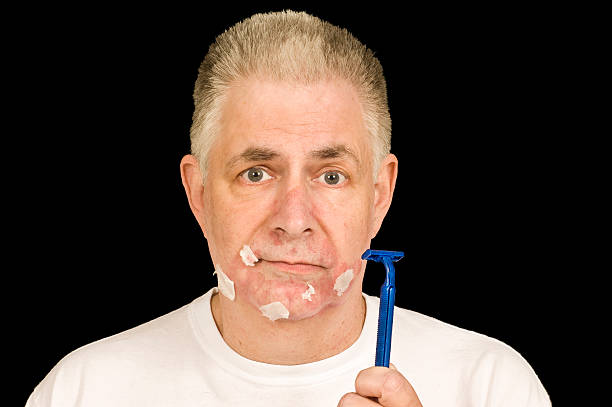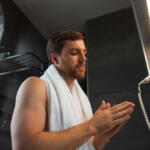
Greetings, fellow shaving aficionados! Welcome to your one-stop resource for understanding and dealing with those irksome nicks and cuts that sometimes accompany our grooming regimen. Shaving is a universal grooming task, adopted by both men and women, and mastering it can sometimes be tricky. My expertise in the field will guide you through dealing with these small but sometimes bothersome injuries.
In this comprehensive guide, we’ll dive into the causes behind shaving cuts, the best practices for immediate treatment, typical healing timelines, and ways to prevent them in the future. So, whether you’re a grooming veteran or a rookie with your first razor, you’re in safe hands. Let’s unravel the mystery!
How To Treat Shaving Cuts:
Just nicked yourself while shaving? Don’t fret. Although these cuts are usually minor, it’s vital to treat them correctly to avoid infection and ensure swift healing. Below are some simple, immediate steps to follow:
- Clean the Area: Begin by rinsing the cut with cool water, eliminating any debris that might have fallen into the wound. Next, wash the area gently with mild soap and water to keep harmful bacteria at bay.
- Stop the Bleeding: Apply soft pressure on the cut using a clean tissue, cotton pad, or cold compress to mitigate bleeding. For minor cuts, an alum block or a styptic pencil can come in handy by constricting blood vessels and halting the bleeding.
- Protect the Cut: Apply an antiseptic ointment, such as Neosporin, to keep the area sterile and lower infection risk. Consider covering larger cuts with a small adhesive bandage.
- Soothe the Skin: Use aloe vera gel or witch hazel to reduce inflammation and calm the skin, both well-known for their skin-soothing properties.
Expected Healing Time for Shaving Cuts:
Healing time is largely dependent on the depth and size of the cut. Here’s a general timeframe to guide your expectations:
- Superficial Nicks: These slight abrasions typically close up within a few hours, completely healing within 1-2 days.
- Deeper Cuts: These could take around 3-5 days to heal completely. Remember to keep the area clean and moisturized to aid in the healing process.
- Large or Deep Wounds: Healing may take a week to 10 days or longer. Should the cut continuously bleed, appear to gape, or show signs of infection, seek medical help immediately.
Warning Signs of Infection:
Although most shaving cuts are harmless, complications can arise if they’re not treated adequately. Infection is a risk with any skin wound, so be vigilant for these signs:
- Redness and warmth surrounding the cut
- Swelling or throbbing pain
- Pus or discharge coming from the wound
- Foul odor originating from the cut
- Fever or chills
If any of these symptoms appear, don’t hesitate to seek medical attention. Proper wound care and potential antibiotics may be necessary.
Preventing Future Shaving Cuts:
Shaving cuts can indeed be a nuisance, so prevention is crucial. Here are some preventative measures:
- Exfoliate: Regularly use a gentle exfoliating scrub to remove dead skin cells, this will also help lift the hair for a closer shave.
- Stay Sharp: Change your razor blades frequently. Dull or rusty blades are a common cause of tugging, irritation, and nicks.
- Heat Up: Soften your skin and hair by taking a warm shower or applying a warm washcloth to the area you intend to shave.
- Lather Well: Opt for a quality shaving cream, gel, or soap that can produce a thick, protective lather. This minimizes friction and helps the razor glide smoothly over your skin, reducing the likelihood of cuts.
Shaving Products Compared:
Selecting appropriate shaving products can elevate your shaving experience and protect your skin better. Here’s a comparison to help you make the best choice:
| Product Type | Pros | Cons |
| Shaving Cream | Creates a rich lather, hydrates skin, good for dry skin | May contain artificial chemicals, and may require a shaving brush |
| Shaving Gel | Transparent for precision, facilitates easy glide, ideal for sensitive skin | Can be drying to the skin, and may contain alcohol |
| Shaving Soap | Comprises natural ingredients, long-lasting, eco-friendly | Requires use of a shaving brush, may have a learning curve |
| Shaving Foam | Convenient, easy application from a can, suitable for quick shaves | Offers less protection, can dry out the skin, and may contain propellants |
In Conclusion:
There you have it, folks! Shaving, like any other art, takes practice to perfect. While shaving cuts can be a minor annoyance, they can be dealt with swiftly and prevented effectively with the right care and knowledge. So, don’t shy away from sporting that clean-shaven look with confidence. Remember, your skin is unique, and understanding its needs will help you tailor your shaving routine for the best results. Say goodbye to shaving mishaps and embrace the joy of a flawless shave!
Last update on 2024-04-24 / Affiliate links / Images from Amazon Product Advertising API
Affiliate Disclosure: This post contains affiliate links, which means I may receive a small commission, at no extra cost to you, if you make a purchase using these links.

Jay Kang
Just because i'm asian does not mean I don't need shaving. I always wanted to grow a beard when I was young, now I need to shave because hair growth for me is a problem. I'm going through what every man will and has gone through before.





